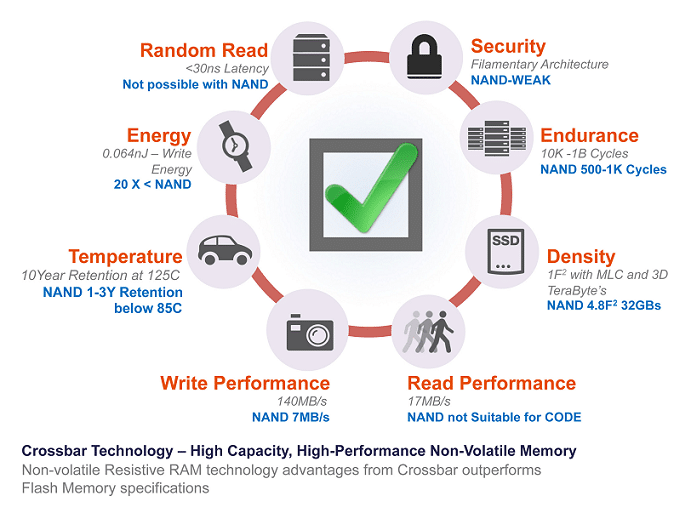But do you know what Resistive RAM is, or simply RRAM or ReRAM? The official description goes like this: To put it in plain English, this is the next step when it comes to flash memory. Indeed, there is a number of different companies that are working on this technology but it seems that we have one that’s ahead of them all. Crossbar, a company placed probably in the best location for such start-ups, Santa Clara, California has officially gone “out of stealth mode” and announced a new kind of a memory chip that might prove to be revolutionary for the $60 billion dollar flash market.
Crossbar looks to revamp the flash market
Resistive RAM can store up to a terabyte of data on a tiny chip. How tiny? Well, even smaller than a postage stamp. One terabyte of data, which means around 250 hours of high-definition, on a very small memory chip is bigger news that we might realize right now. Just think about this – flash memory is present on your phone, on your tablet, your digital camera, laptop and so on. The RRAM technology developed by Crossbar is able to access data twenty times faster than the fastest available flash memory. When it comes to flash memory, speed is indeed essential, and RRAM has some truly impressive numbers to put us in complete awe:
140 megabytes per second is the write performance, compared to 7 megabytes a second for flash. 17 megabytes per second is the read performance 30 nanoseconds is random read latency
But there is more than just speed: RRAM consumes 20 times less power, thus seriously extending the battery life of devices that will carry it. And these tiny chips are also resistant, having 10 times the endurance of NAND flash chips that are currently the standard on the market. Crossbar has a bright future ahead for itself, as it has all the chances of being in the center of the wave that will bring new technologies in the flash memory market. That’s why it has managed to raised recently $25 million from Kleiner Perkins Caufield & Byers, Artiman Ventures, and Northern Light Venture Capital. But, as Dean Takahashi with VentureBeat observes, we won’t see Resistive RAM that soon on the market, because of how things currently are in the flash market: The direct effect of Crossbar’s chips on your day-by-day electronic device will mean a faster storage, better playback, and smoother backup and archiving. But the Resistive RAM technology has all the chances of making its way into solid-state drives and cloud computing devices and, who knows, maybe even in future wearable gadgets such as Google Glass. And for the tech-savvy, here’s what a Crossbar memory cell is based on











